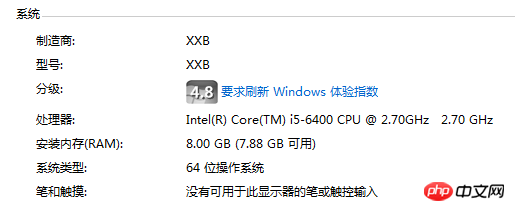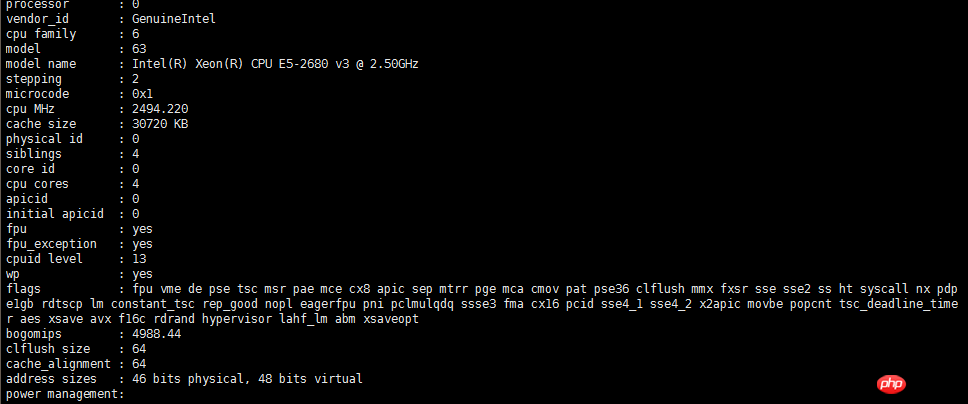
Auf Wunsch der Gruppe haben wir eine Flash-Sale-Funktion für das Servicekonto erstellt. Ich wollte PHP-Multithreading ausprobieren, also habe ich die Order-Grabbing-Funktion simuliert. Dieser Artikel teilt Ihnen hauptsächlich die PHP-Multi-Thread-Simulation zur Realisierung der Flash-Sale- und Order-Grabbing-Funktion mit. Ich hoffe, dass er jedem als Referenz dienen kann.
Lassen Sie uns zunächst über die Idee des Flash-Sale-Moduls sprechen:
Benutzer-Flash-Sale-Betrieb unter normalen Umständen
1 Verkaufsanfrage
2. Betreten Sie die Flash-Sale-Warteschlange
3. Bei der Flash-Sale-Ergebnisanfrage wird eine Verzögerung von 1-2 Sekunden angezeigt (dies kann als getarnte Ablenkung angesehen werden)
Erzeugen Sie bei Erfolg eine Bestellung
<?php
set_time_limit(0);
/**
* 线程的执行任务
*/
class Threadrun extends Thread
{
public $url;
public $data;
public $params;
public function __construct($url, $params=[])
{
$this->url = $url;
$this->params = $params;
}
public function run()
{
if(($url = $this->url))
{
$params = [
'goods_id' => 1,
'activity_id' => 1,
'user_id' => isset($this->params['user_id']) ? $this->params['user_id'] : $this->getCurrentThreadId(),
];
$startTime = microtime(true);
$this->data = [
'id' => $params['user_id'],
'result' => model_http_curl_get( $url, $params ),
'time' => microtime(true)-$startTime,
'now' => microtime(true),
];
}
}
}
/**
* 执行多线程
*/
function model_thread_result_get($urls_array)
{
foreach ($urls_array as $key => $value)
{
$threadPool[$key] = new Threadrun($value["url"],['user_id'=>$value['user_id']]);
$threadPool[$key]->start();
}
foreach ($threadPool as $thread_key => $thread_value)
{
while($threadPool[$thread_key]->isRunning())
{
usleep(10);
}
if($threadPool[$thread_key]->join())
{
$variable_data[$thread_key] = $threadPool[$thread_key]->data;
}
}
return $variable_data;
}
/**
* 发送 HTTP 请求
*/
function model_http_curl_get($url,$data=[],$userAgent="")
{
$userAgent = $userAgent ? $userAgent : 'Mozilla/4.0 (compatible; MSIE 7.0; Windows NT 5.2)';
$curl = curl_init();
curl_setopt($curl, CURLOPT_URL, $url);
curl_setopt($curl, CURLOPT_RETURNTRANSFER, 1);
curl_setopt($curl, CURLOPT_TIMEOUT, 5);
curl_setopt($curl, CURLOPT_USERAGENT, $userAgent);
curl_setopt($curl, CURLOPT_POST, true);
if( !empty($data) ) {
curl_setopt($curl, CURLOPT_POSTFIELDS, $data);
}
$result = curl_exec($curl);
curl_close($curl);
return $result;
}
/**
* 友好的打印变量
* @param $val
*/
function dump( $val )
{
echo '<pre class="brush:php;toolbar:false">';
var_dump($val);
echo '';
}
/**
* 写日志
* @param $msg
* @param string $logPath
*/
function writeLog( $msg, $logPath='' ) {
if( empty($logPath) ) {
$logPath = date('Y_m_d').'.log';
}
if( !file_exists($logPath) ) {
$fp = fopen( $logPath,'w' );
fclose( $fp );
}
error_log( $msg.PHP_EOL, 3, $logPath);
}
/**
* 生成日志信息
* @param $result
* @param $timeDiff
* @return bool|string
*/
function createLog( $result, $timeDiff ){
if( empty($result) || !is_array($result) ) {
return false;
}
$succeed = 0;
$fail = 0;
foreach( $result as $v ) {
$times[] = $v['time'];
$v['result'] === false ? $fail++ : $succeed++;
}
$totalTime = array_sum( $times );
$maxTime = max( $times );
$minTime = min( $times );
$sum = count( $times );
$avgTime = $totalTime/$sum;
$segment = str_repeat('=',100);
$flag = $segment . PHP_EOL;
$flag .= '总共执行时间:' . $timeDiff . PHP_EOL ;
$flag .= '最大执行时间:' . $maxTime . PHP_EOL;
$flag .= '最小执行时间:' . $minTime . PHP_EOL;
$flag .= '平均请求时间:' . $avgTime . PHP_EOL;
$flag .= '请求数:' . $sum . PHP_EOL;
$flag .= '请求成功数:' . $succeed . PHP_EOL;
$flag .= '请求失败数:' . $fail . PHP_EOL;
$flag .= $segment . PHP_EOL;
return $flag;
}
/**
* 发起秒杀请求
*/
function insertList( $urls, $logPath='' )
{
$t = microtime(true);
$result = model_thread_result_get($urls);
$e = microtime(true);
$timeDiff = $e-$t;
echo "总执行时间:" . $timeDiff . PHP_EOL;
foreach( $result as $v ) {
$msg = '用户【' . $v['id'] . '】秒杀商品, 返回结果 ' . $v['result'] . ' 用时【' . $v['time'] . ' 秒】 当前时间【'.$v['now'].'】';
writeLog( $msg,$logPath );
}
$logStr = createLog( $result, $timeDiff);
writeLog( $logStr, $logPath );
return $result;
}
//发起秒杀请求
for ($i=0; $i < 1000; $i++)
{
$urls_array[] = array("name" => "baidu", "url" => "http://***.***.com/seckill/shopping/listinsert");
}
$list = insertList( $urls_array, './inset.log' );
//发起秒杀结果查询请求
$urls_array = [];
foreach( $list as $v ) {
if( $v['result'] === false ) {
continue;
}
$urls_array[] = array(
"name" => "baidu",
"url" => "http://***.***.com/seckill/shopping/query",
'user_id' => $v['id'],
);
}
insertList( $urls_array, './query.log' );Systemtestergebnisse:
Durch die Simulation von 1000 gleichzeitigen Situationen kann eine einzelne Maschine mehr als 300 Bestellungen pro Sekunde verarbeiten, und der Server steht nicht unter Druck.  Im Gegenteil, die Testmaschine hielt es nicht aus und die CPU stieg um 100 %. Apache stürzt gelegentlich ab.
Im Gegenteil, die Testmaschine hielt es nicht aus und die CPU stieg um 100 %. Apache stürzt gelegentlich ab.
 Verwandte Empfehlungen:
Verwandte Empfehlungen:
PHP und Redis realisieren Code-Sharing für Flash-Sale-Funktionen in Einkaufszentren
JS-Skript realisiert automatisches Flashen von Webseiten Teilen von Verkaufsbeispielen
Das obige ist der detaillierte Inhalt vonPHP implementiert Flash-Sale-Code. Für weitere Informationen folgen Sie bitte anderen verwandten Artikeln auf der PHP chinesischen Website!
 So öffnen Sie eine PHP-Datei
So öffnen Sie eine PHP-Datei
 So entfernen Sie die ersten paar Elemente eines Arrays in PHP
So entfernen Sie die ersten paar Elemente eines Arrays in PHP
 Was tun, wenn die PHP-Deserialisierung fehlschlägt?
Was tun, wenn die PHP-Deserialisierung fehlschlägt?
 So verbinden Sie PHP mit der MSSQL-Datenbank
So verbinden Sie PHP mit der MSSQL-Datenbank
 So verbinden Sie PHP mit der MSSQL-Datenbank
So verbinden Sie PHP mit der MSSQL-Datenbank
 So laden Sie HTML hoch
So laden Sie HTML hoch
 So lösen Sie verstümmelte Zeichen in PHP
So lösen Sie verstümmelte Zeichen in PHP
 So öffnen Sie PHP-Dateien auf einem Mobiltelefon
So öffnen Sie PHP-Dateien auf einem Mobiltelefon




